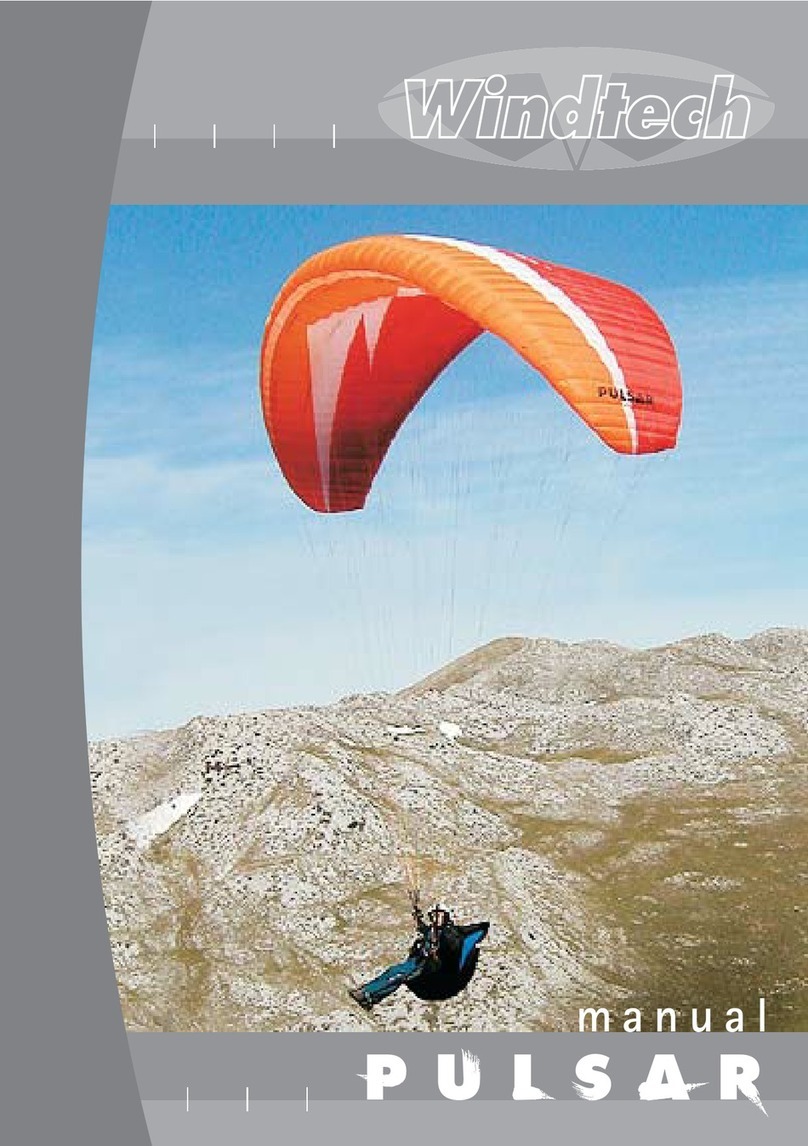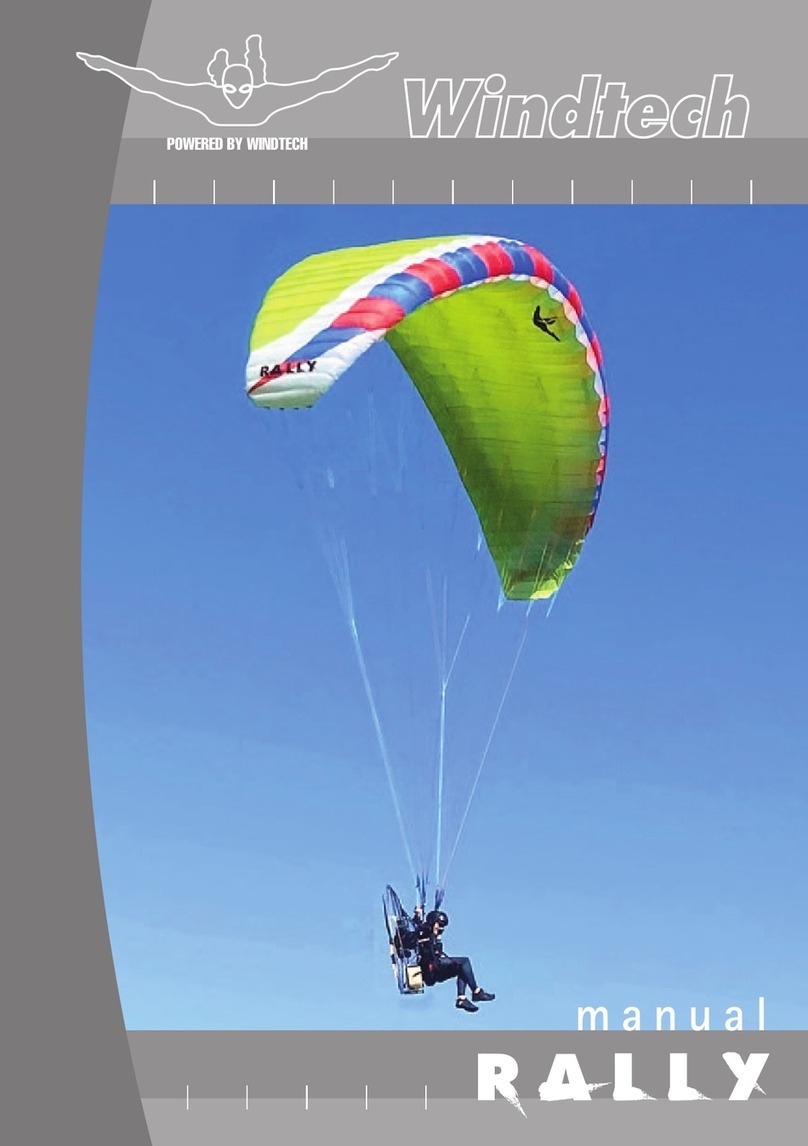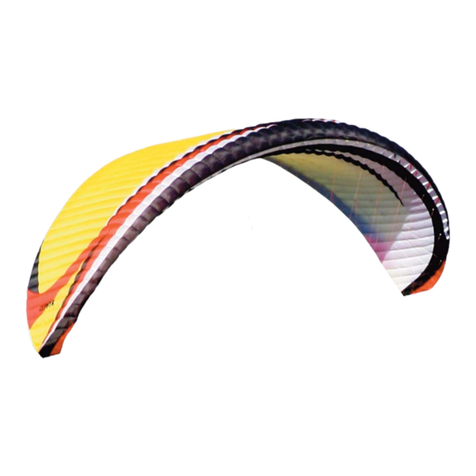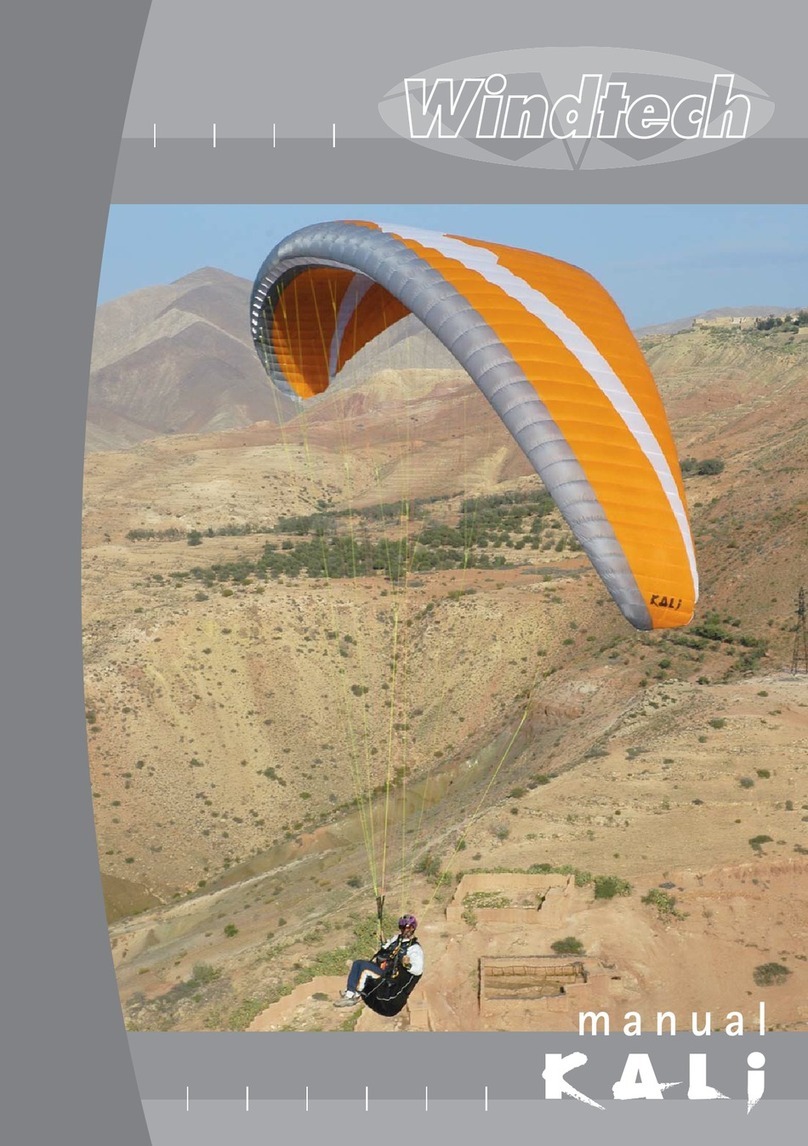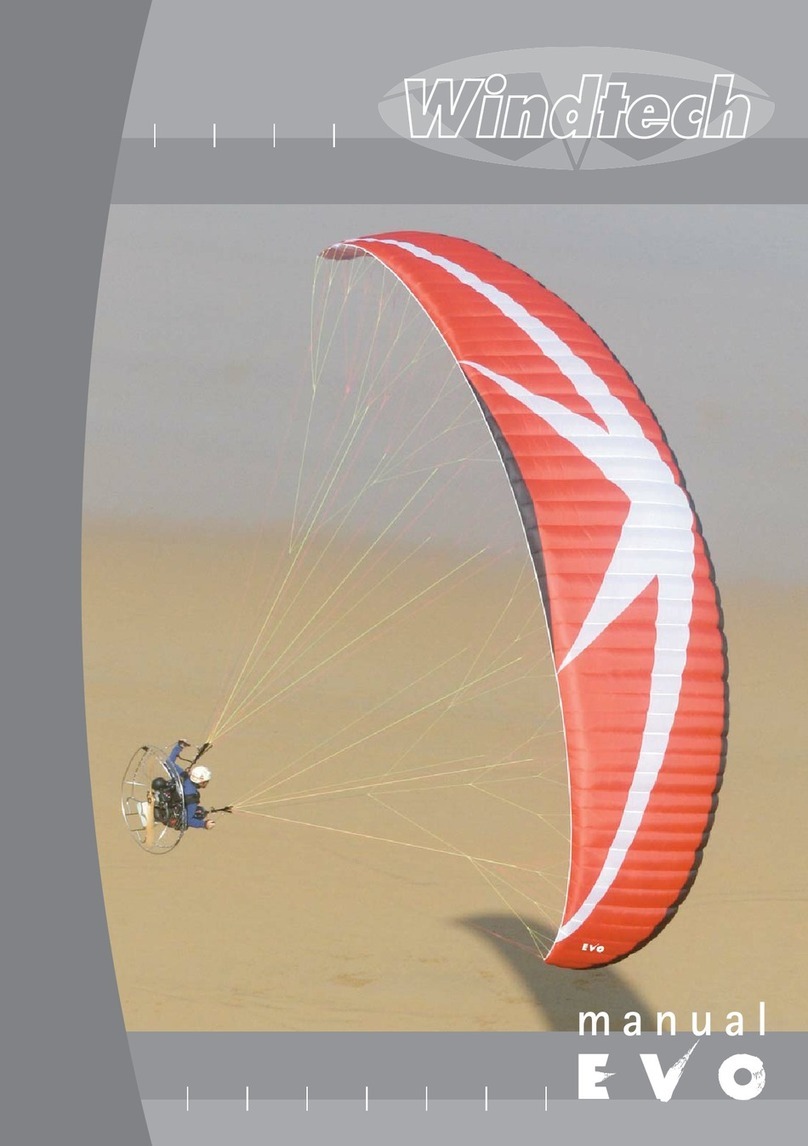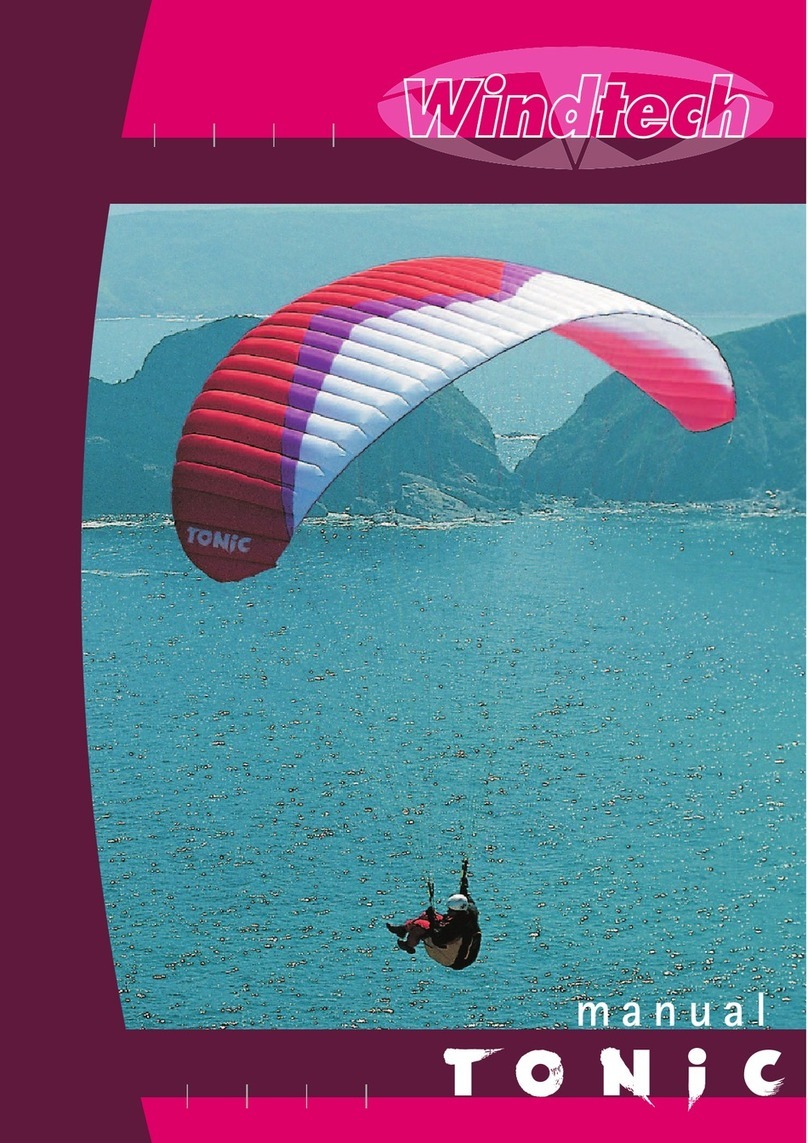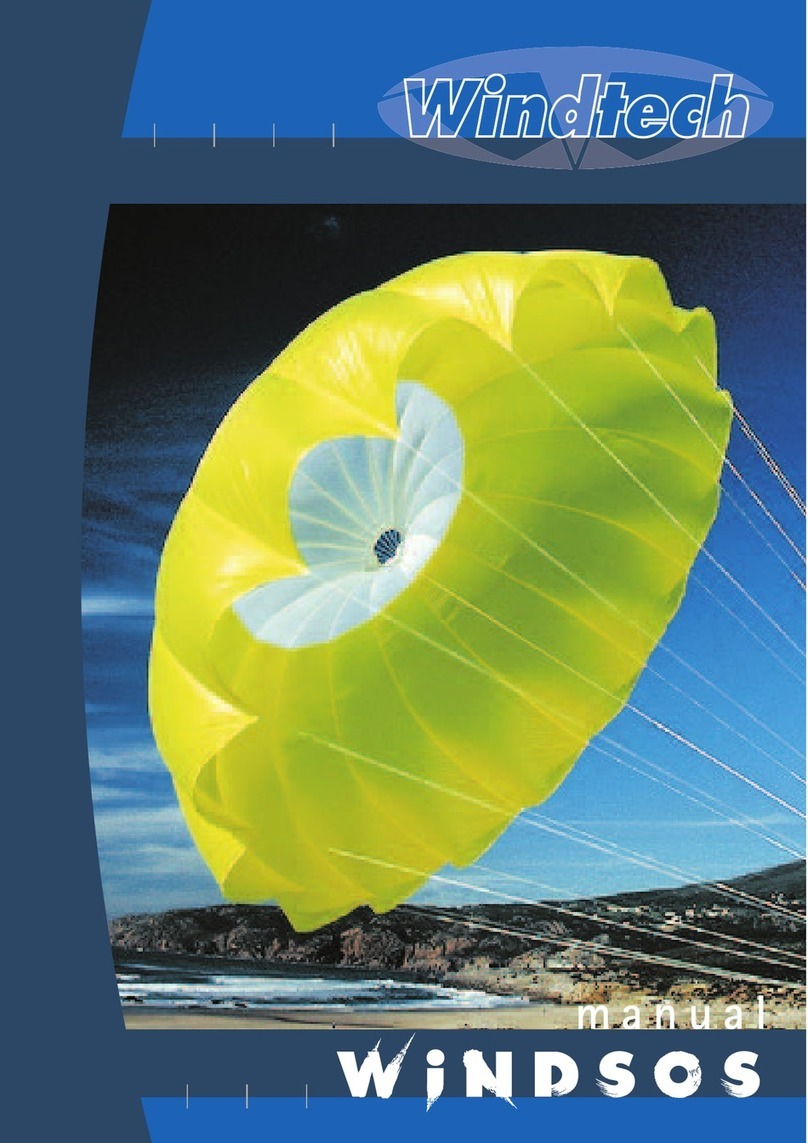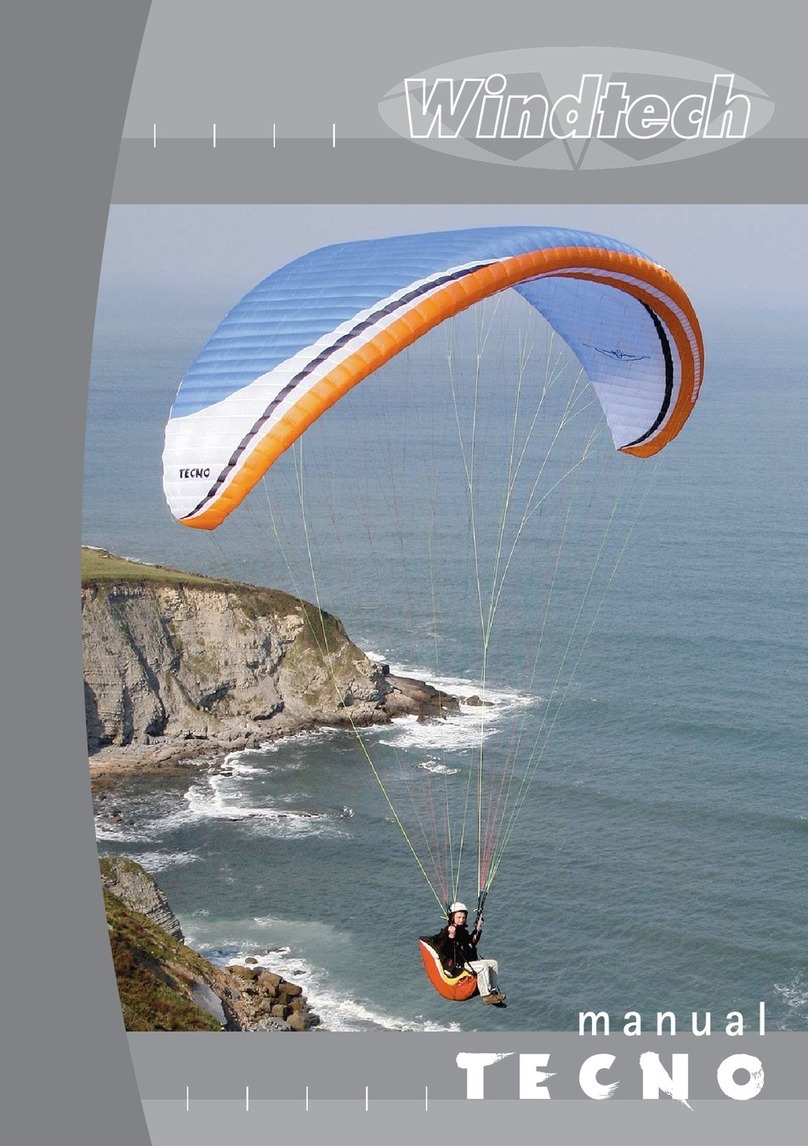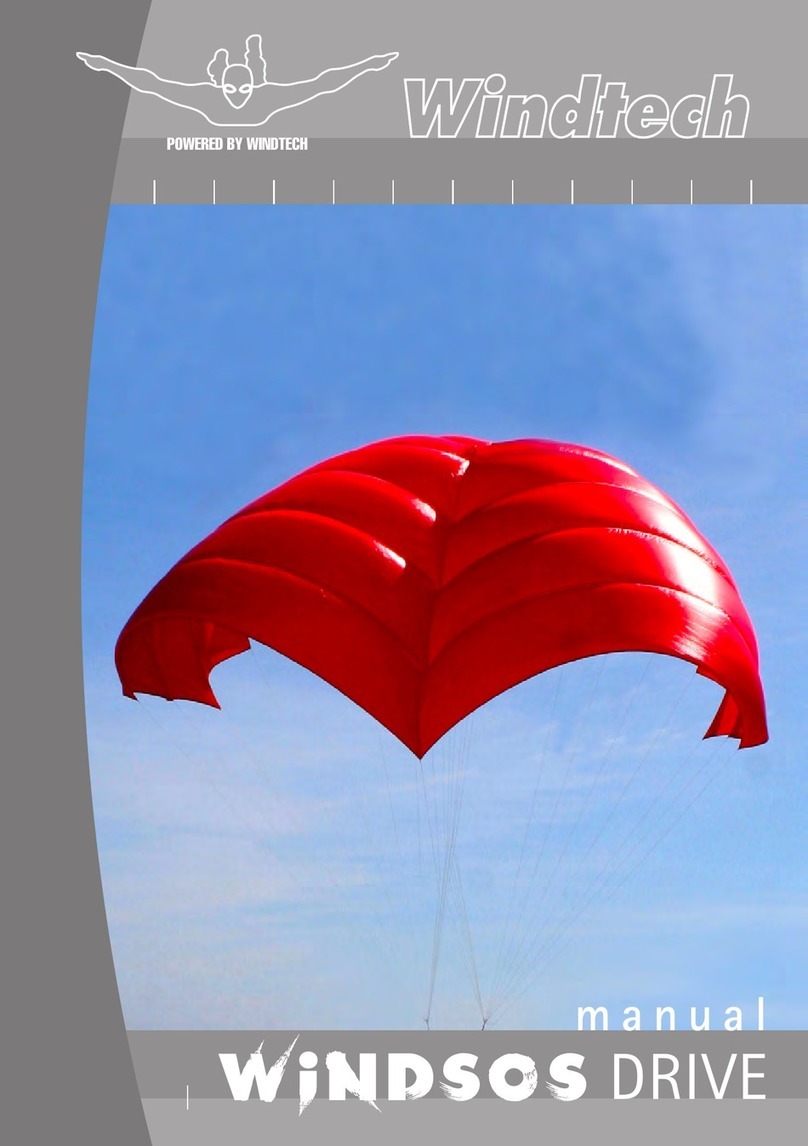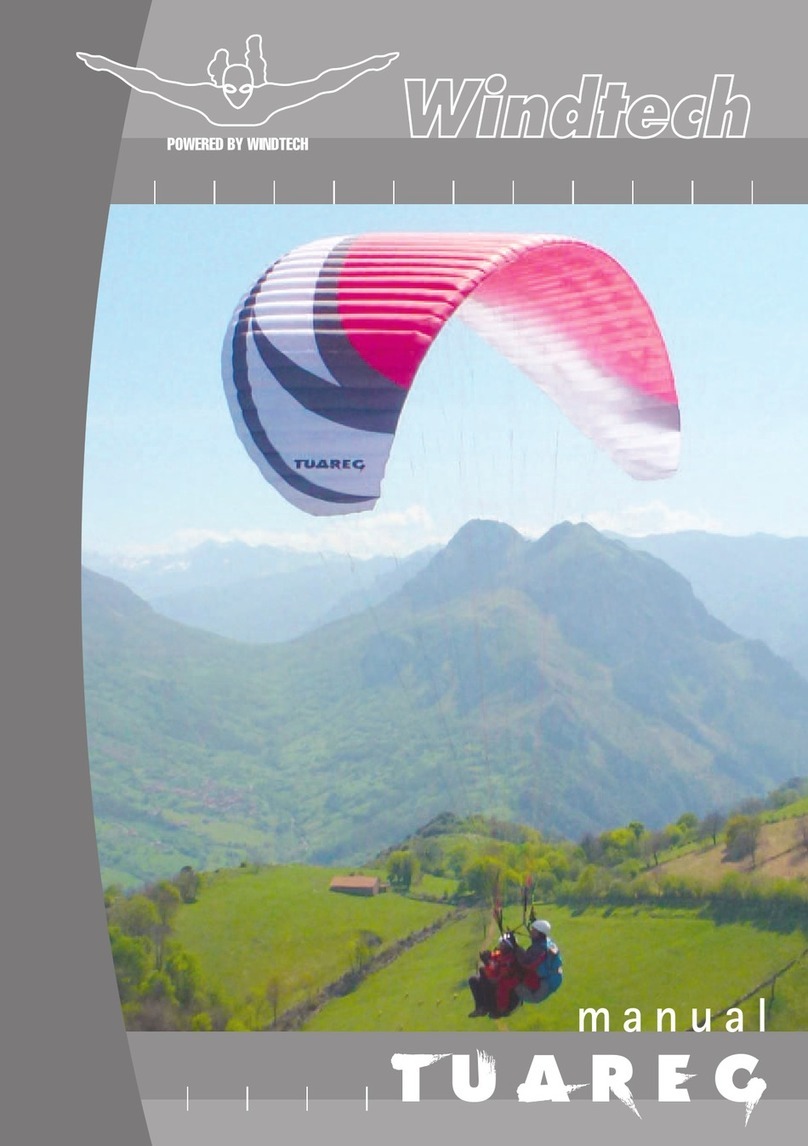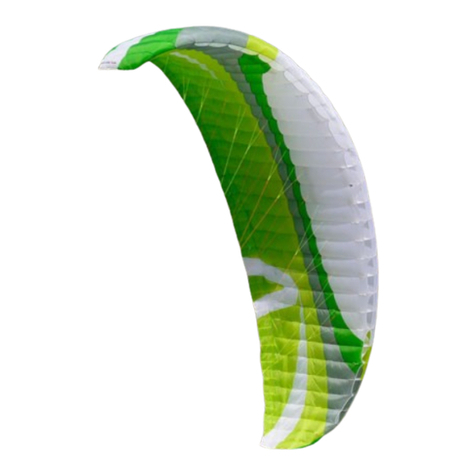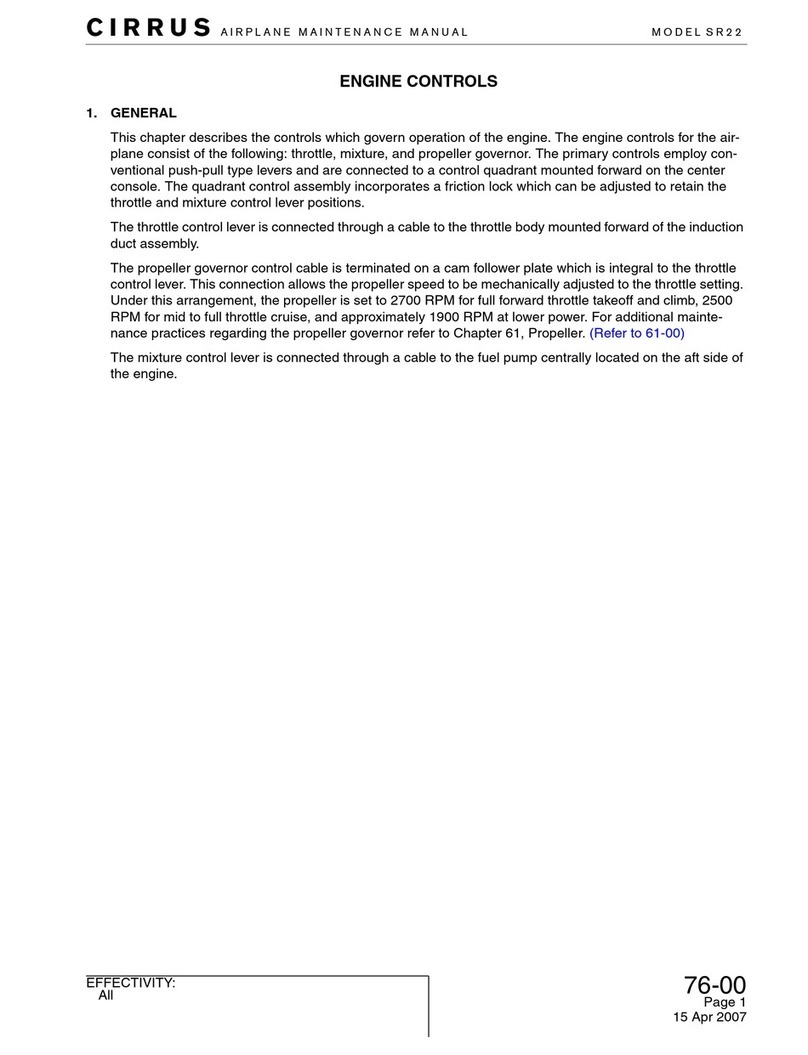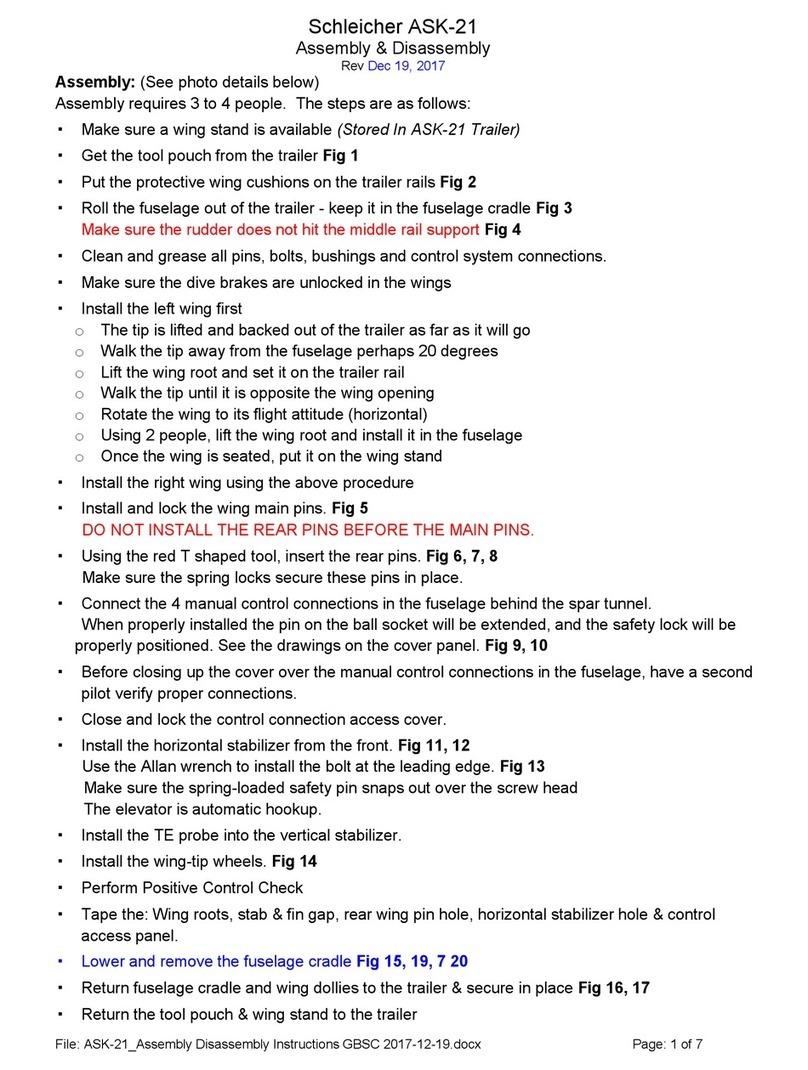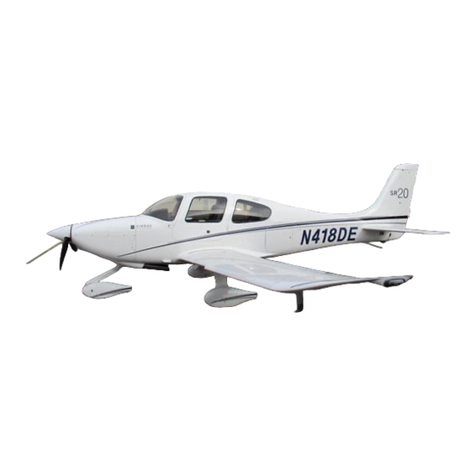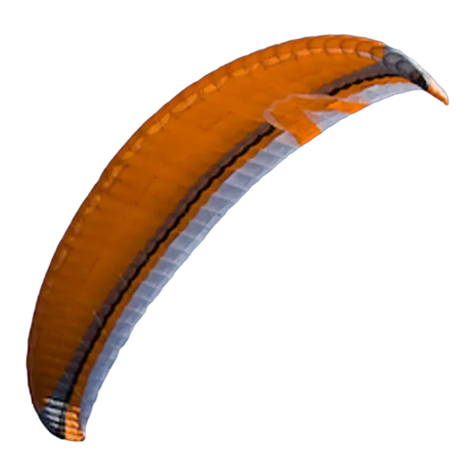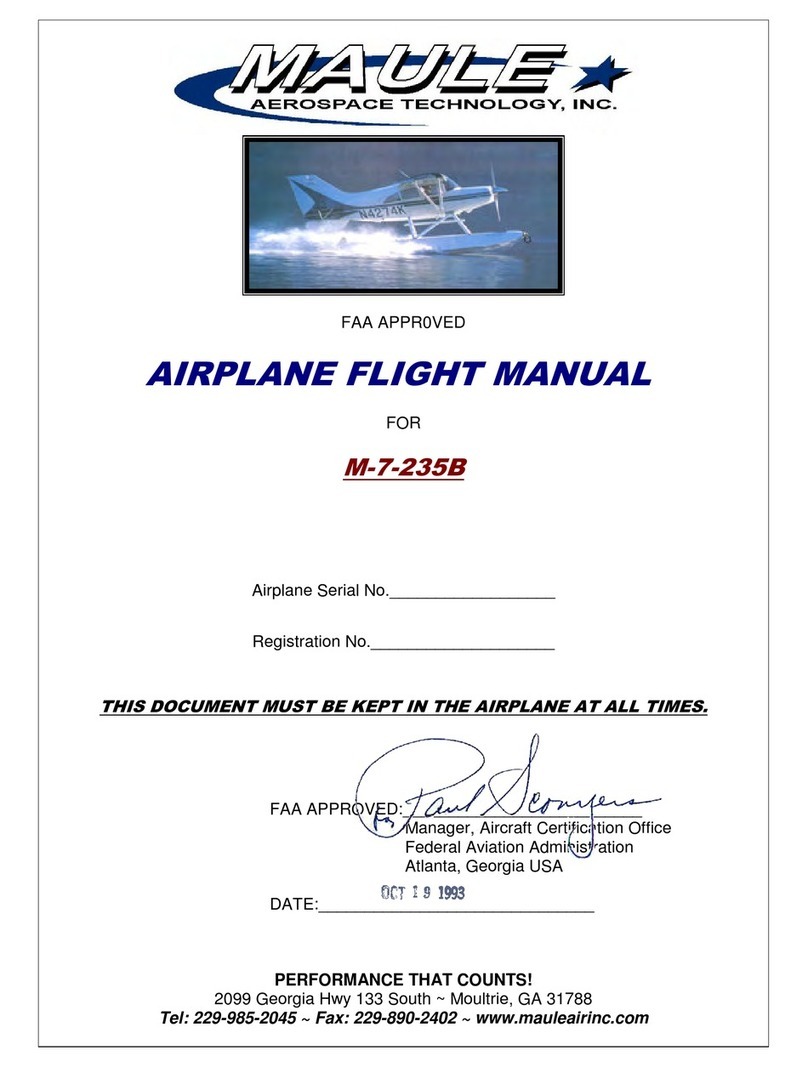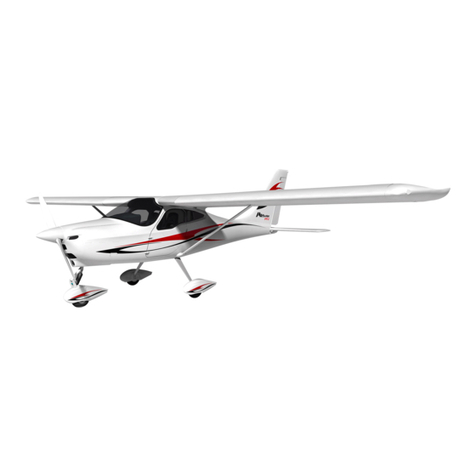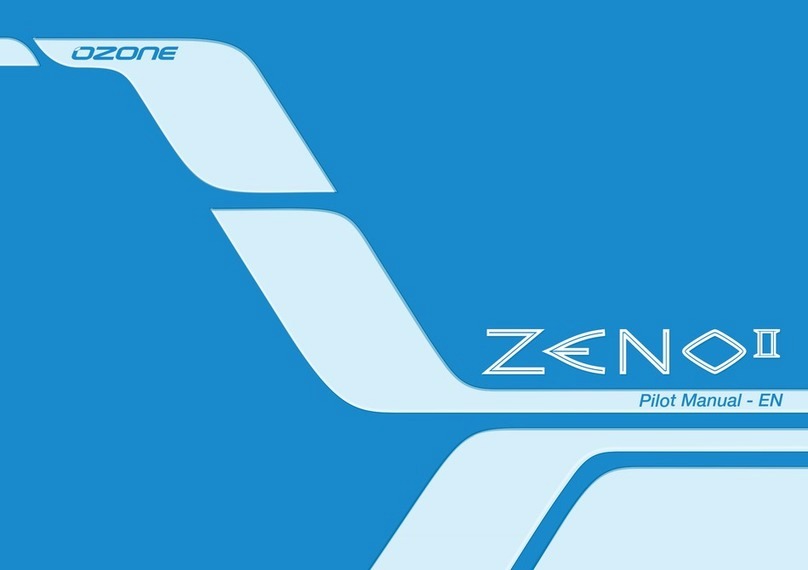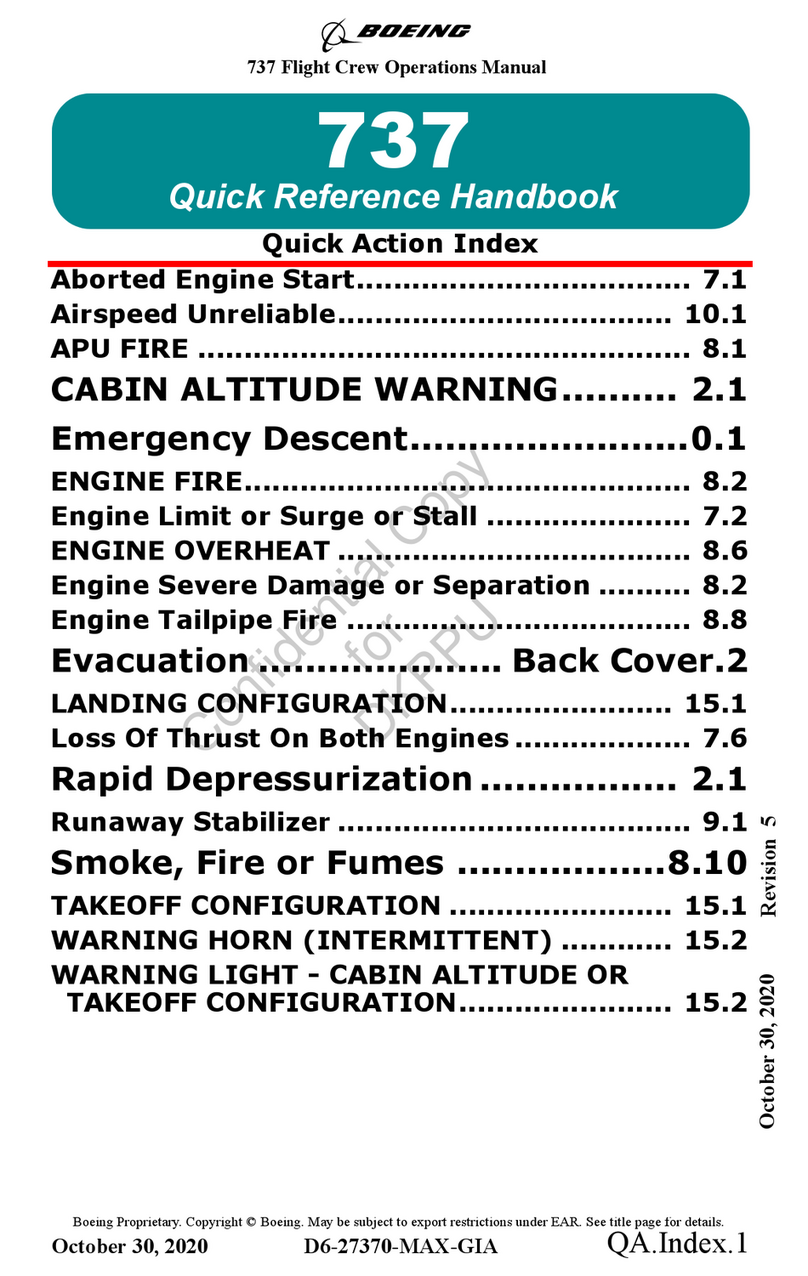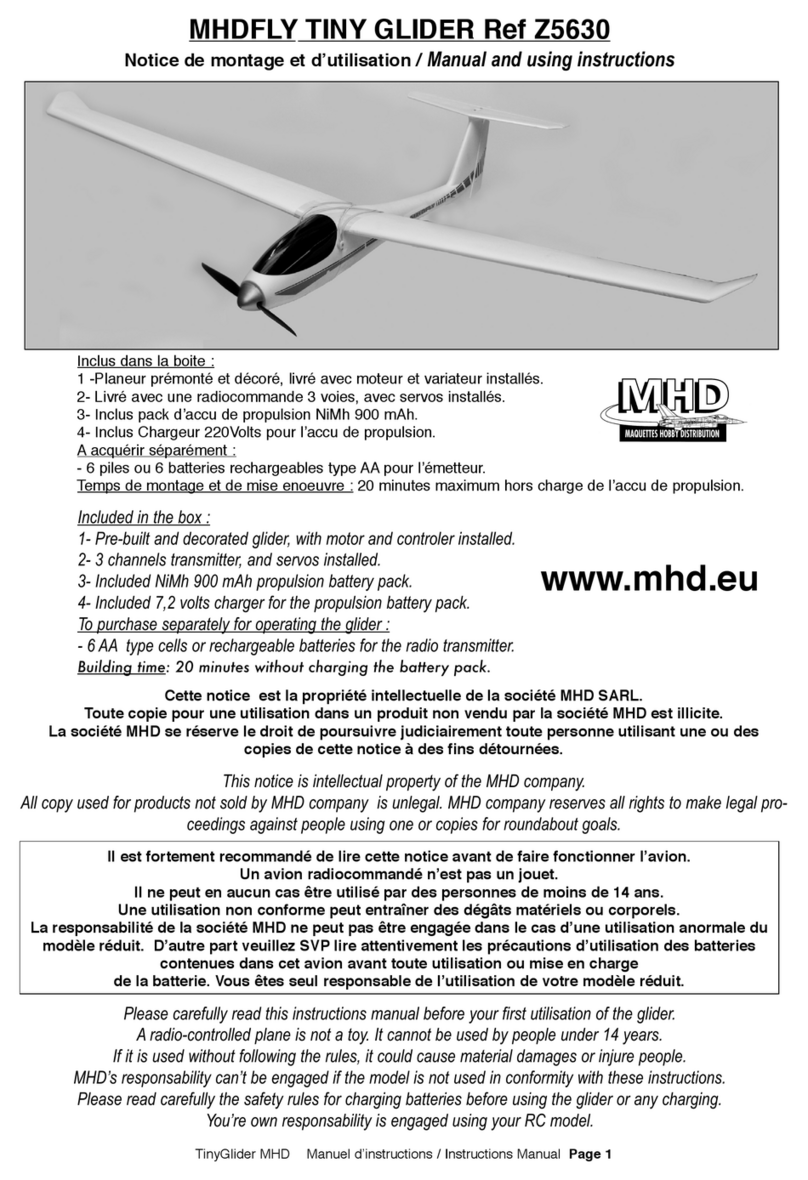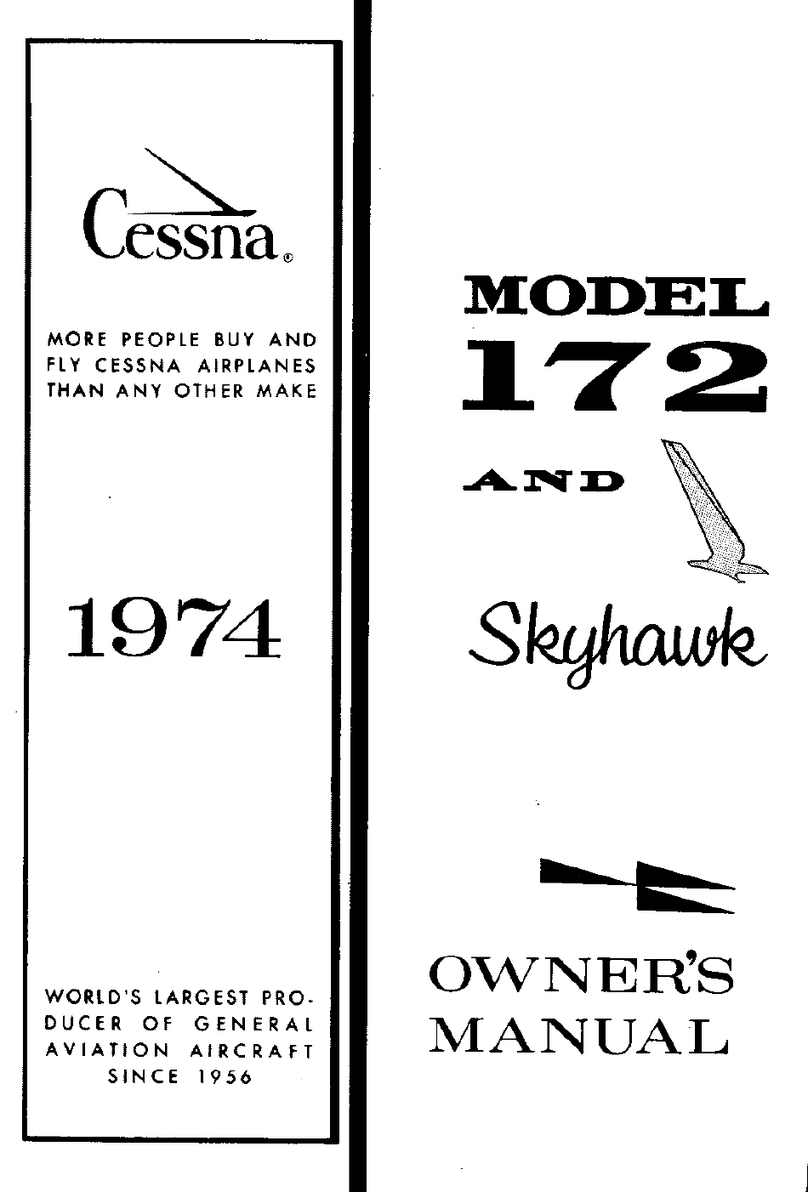9
When flying into (against the) wind a better glide can be obtained by using the speed
system. The following is rough guide line as to how much to apply.
-With around 10 km/h of head wind, best glide is obtained with 25% accelerator applied.
-With around 15-25 km/h of head wind, best glide is obtained with 50% accelerator.
-With around +25 km/h of head wind, best glide is obtained with 75-100% accelerator.
When flying downwind (wind from behind ) the best glide is obtained between 0% brake
and 10% of brake.
The trim travel of the glider has been limited to a point where the security/safety of the
wing is still high and yet permits a gain of 12km/h. In any case it is recommended not
to use the trimmers close to the ground, or when conditions are turbulent. If turbulent
conditions are encountered, or if you are nearing the ground we recommend that you
return the trimmers without delay to the “normal” trim position, for take-off, landing and
flying turbulence.
Always fly a glider that is the correct size for you, and remember that if your flying
weight is below the stated minimum, the speed range will diminish and inflation pro-
blems may appear. Also the handling will degrade in turbulent conditions, and it will be
easier to sustain collapses. If your flying weight is above the stipulated weight range, this
will result in a higher minimum speed and faster landing speed and the stall speed of the
glider will also be higher.
-- powered flight
The concept of performance under power is considerably different to that in free-flight
(without power). Factors that affect this include: thrust; power and size of the engine;
diameter of the cage; flight altitude; meteorological conditions, such as density of the
air; wing loading, etc. We STRONGLY recommend that you try to learn all about these
effects, by reading books about paramotoring and speaking with more experienced para-
motor pilots, coaches and instructors, BEFORE you start flying.
What is certain is that, due to an increase in wing loading and the extra drag caused by
the chassis of the motor, the sink rate, flying and handling characteristics, and perfor-
mance of the glider will be affected. For this reason we consider it extremely important
that the pilot chooses a motor that is most suited to the pilot’s weight, abilities, and
intended uses in flight, etc. When one takes into consideration all of the factors, one will
arrive at one set of performances and flight characteristics, or another.
> flight
Each and every glider has a checklist note passed though our strict quality control in the
factory. This includes line measurement, ground inflation and flight testing. Contact your
distributor for more information about this, and if your glider has not been pre-inflated
